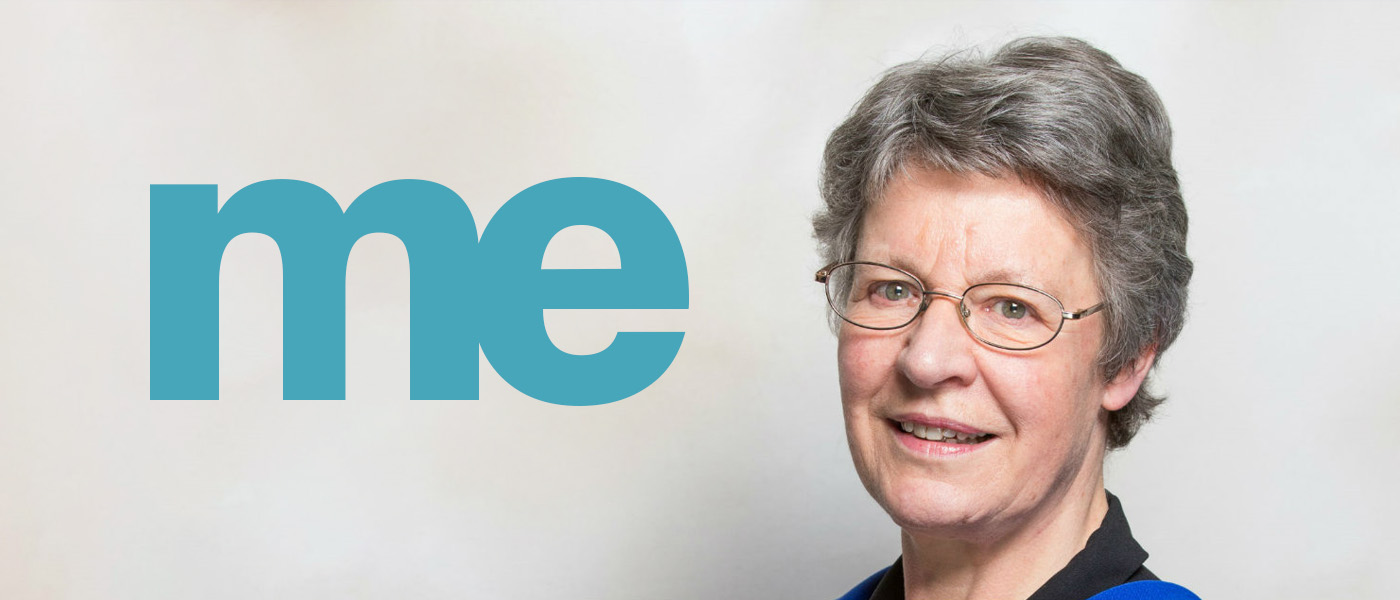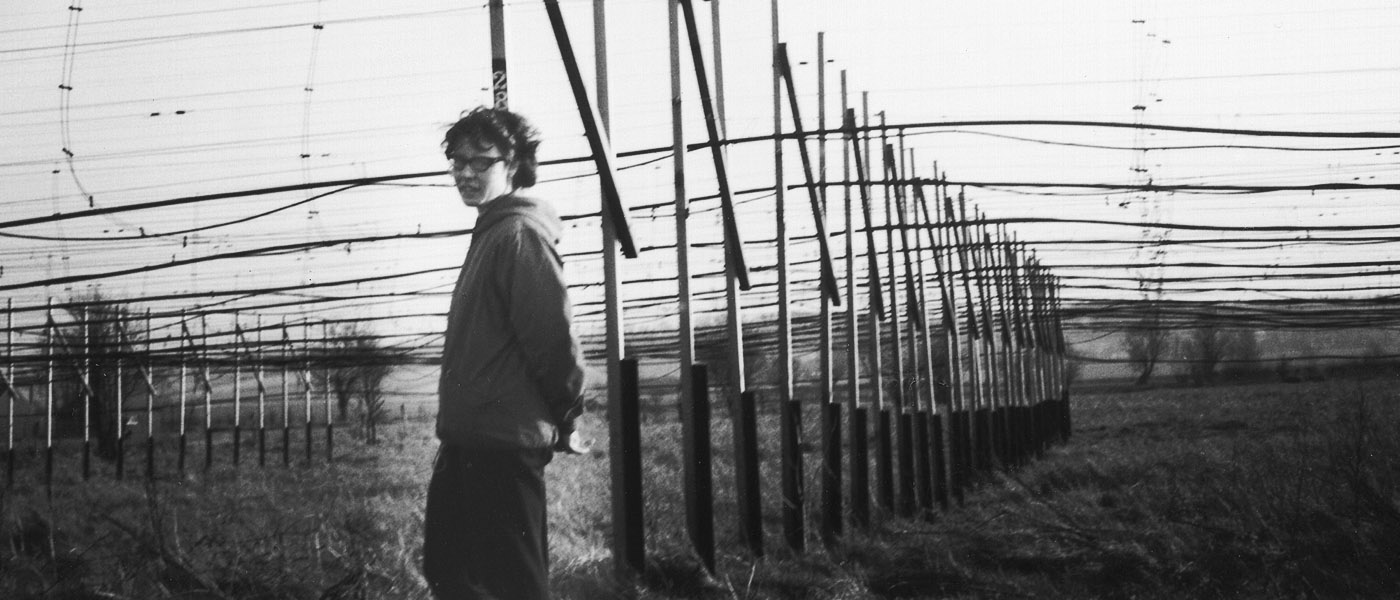
Me by Dame Jocelyn Bell Burnell
Dame Jocelyn Bell Burnell (BSc 1965) made a major astronomical discovery in 1967 as a PhD student when, after spending two years building a radio telescope the size of 57 tennis courts, she spotted some unusual activity on the hundreds of metres of graph paper she had to analyse each day. Jocelyn was the only person not to dismiss this as interference or 'scruff'. She knew it was something more than that – it was a pulsar. Her discovery – though controversially, not Jocelyn herself – won the Nobel Prize for Physics in 1974.
For those who are unfamiliar with astrophysics, can you explain what pulsars are?
Stars, including our sun, evolve. They’re shining, they’re using up their fuel and at the end of their life, they will die. Stars much bigger than the sun die with an explosion and in this explosion, the core of the star gets kicked against and shrunk and that makes a pulsar. It’s extremely dense.
Do you have one particular standout memory from that period of discovery in 1967?
I think finding the second one was important. When you’ve got just one, it might be some instrumental quirk, a fiction of your equipment, whereas if you’ve got more than one – and I ended up having four – then you’ve really got to believe these things exist.
Why was your discovery so significant?
One of the reasons was that it made black holes, which at that stage were thought to be a bit science fiction-ish, seem much more likely and indeed, we found black holes not that long afterwards.
There are pictures of you back then, gathering data outside and looking a bit cold – how gruelling was that time for you?
It was certainly physically quite demanding. I was working in cold conditions, and it was heavy work that involved sledgehammering. I was playing hockey for the local team and I’d become so strong with all this sledgehammering that I could hit a hockey ball from one end of the pitch to the other. My hockey team didn’t appreciate it!
When the story of the discovery broke, there was huge media interest. How did the interviews put to you and your supervisor differ, and how did you react to these questions at the time?
The treatment of young women by the press at the time was despicable. We were, quite simply, sex objects. So, they wanted to know my bust, waist and hip measurements, and would I describe my hair as brunette or blonde? How many boyfriends did I have? Not an iota of science in it anywhere. I tried to a degree to push back against these questions, but journalists were very single-minded and I couldn’t make too much of a fuss because I’d already invested almost three years in this project, I had six months to go and I wanted my PhD, please, by this stage. So I didn’t feel I could rock the boat too much.
How do you feel about the fact your more senior colleagues were awarded the Nobel Prize, but you were overlooked?
I've actually done well out of not getting the Nobel Prize because if you're not awarded it, you tend to get everything else that's on offer! And that's much more fun – I get to go to a different party every year. But in those days, students weren't recognised by the committee and I've said that I felt it would demean the prizes if they were offered to graduate students. These days, however, the Nobel Committee is more alert to these issues, and they do now occasionally award the Nobel Prize to women. But it's by no means parity.
You’ve spoken about experiencing imposter syndrome – how did that manifest itself?
My life had been in the northern half of the UK until I went to Cambridge. It was the 'deep South' for me, almost a foreign country. Full of young men with bags of self-confidence who would talk the hind leg off a donkey and gave the impression that they had a God-given right to be in Cambridge. And here’s me, with a different accent and female, so definitely in a minority. That made me feel that Cambridge had made a mistake admitting me, that I wasn’t the right kind of person to be there.
"I decided I would work my very hardest, so that ‘WHEN’ they threw me out of Cambridge, I would know I’d tried my best. But by the end of my PhD, when I was discovering pulsars, I certainly felt, yes, this is what I should be doing."
When and how was your interest in astronomy originally sparked?
My father was an architect and he used to take me along as his surveying assistant. So I got to spend quite a lot of time with him and he was very widely read – he brought home a lot of interesting books from the library. It was when I was about 10 or 11 and he brought home an astronomy book that I removed it to my bedroom, read it, and thought, aha, I’d like to be an astronomer.
You rose to the heights of becoming president of both the Institute of Physics and the Royal Astronomical Society and are now a Visiting Professor at Oxford University – but you’ve still described your career as “crazily patchy”. Why was that?
I got married very soon after finishing my PhD and moved around the country with my husband as he moved job. He would say, there’s a job I’d like that's going in such-and-such a place – if we went there, is there an astronomy place anywhere nearby? If there was, he’d apply and if he got the job, I’d then write a begging letter to that astronomy place saying, “Would you have any part-time jobs?” Because I was trying to look after a child as well. So, my career has really not been a career in the sense that a man would have.
Is there anything on the arts front that balances the science for you?
I like classical music – I’ve worked with the Orchestra of the Age of the Enlightenment, getting some of their musicians to read poems with astronomical content. Collecting those poems is one of my hobbies and I edited a volume of astronomy-related poetry called Dark Matter: Poems of Space. Sometimes I do talks on that type of poetry and I find that those talks draw a lot more women to the audience than would a straight science talk. Sad, but still one of the facts of life. So it’s a good way of gently introducing some astronomy to people who might be a bit scared of science.
Jocelyn with the vast radio telescope she played a key part in building and operating, Cambridge, 1967.
UofG memories
I was unsure whether to do an astronomy degree or a physics degree to begin with, and Glasgow had both – so that swung my decision to come here. In the end, I opted for physics because I thought it was more versatile. If I wasn’t good enough to be a professional astronomer, I could still get a job as a physicist, whereas with an astronomy degree, if I wasn’t good enough to do astronomy, I might be a bit stranded.
It was the ‘tradition’ at Glasgow in some of the sciences where there were few women, including physics, that when a woman entered the lecture theatre, all the guys would whistle, stamp, beat on the desks and catcall. This happened at every lecture. If you blushed, they only made more noise, so I learned not to blush. I was the only female doing single honours physics and therefore I had to face this on my own. You’d just march in, stony-faced, take your seat and let the hullabaloo rage around you.
Despite this, I still have happy memories of my time at Glasgow. I played quite a lot of hockey, which I enjoyed very much, and I belonged to the Drama Society – I did backstage drama. Things like that were great fun.
I remember virtually nothing of my graduation day, but I still have memories of the following morning, leaving Wolfson Hall, which was a new hall of residence that opened during my time at Glasgow. I can remember walking away down the drive to get the bus into the centre of town and thinking, “This is a change. I’m leaving.”
Jocelyn’s work was introduced to a new audience when a graphic of the pulsar she discovered became the artwork of Joy Division’s debut album Unknown Pleasures in 1979. The illustration has become an iconic example of record cover art.
This article was first published April 2023.
Animation top, of the original graph paper and pulsar trace that Jocelyn identified, courtesy of the Churchill Archives, University of Cambridge. Our Avenue masthead this issue is a graphic depiction of this first-discovered pulsar, which has become famous in popular culture since being used on the cover of Joy Division's album Unknown Pleasures in 1979.
Image above: the University of Dundee
Image below left: courtesy of Jocelyn Bell Burnell
The Special Breakthrough Prize
Dame Jocelyn won the prestigious Breakthrough Prize in Fundamental Physics in 2018 for “fundamental contributions to the discovery of pulsars, and a lifetime of inspiring leadership in the scientific community”. She donated her entire prize of $3m to set up a fund, the Bell Burnell Graduate Scholarship Fund, which supports physics postgraduate students from underrepresented backgrounds.
“Professor Bell Burnell thoroughly deserves this recognition. Her curiosity, diligent observations and rigorous analysis revealed some of the most interesting and mysterious objects in the Universe.” – Yuri Milner, founder, Breakthrough Prizes
The Breakthrough Prizes have become known as “the Nobels of the 21st century” and the previous winners of the Physics Prize were Professor Stephen Hawking; the CERN scientists whose leadership led to the discovery of the Higgs boson; and the LIGO collaboration of scientists who detected gravitational waves, including our own Professor Sir James Hough (BSc 1967, PhD 1971).


